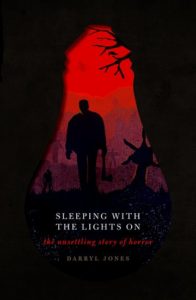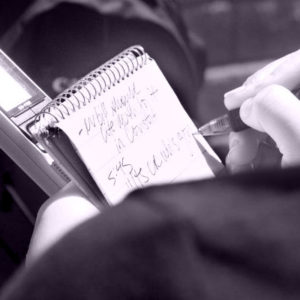The serial killer is our great modern demon. This figure is a source of recurring fascination in horror, and in popular culture at large. A glance at the ‘True Crime’ shelves of any bookshop will reveal dozens of pop-biographical and quasi-criminological ‘studies’ of notorious serial killers and their unspeakable crimes. Peter Sutcliffe, Ted Bundy, Dennis Nilsen, John Wayne Gacy, Fred and Rosemary West, Jeffrey Dahmer, Henry Lee Lucas, Harold Shipman. We repeat their names as a litany of fear. Often, supernatural power or superhuman genius is ascribed to these figures, generally in direct antithesis to historical reality. Hannibal Lecter, as Thomas Harris’s later novels strongly imply, may well be the Devil himself, a figure of vast learning, intellect, and culture who seems to act out of an authentic sense of categorical species superiority, but real-life serial killers tend on the whole to be poorly educated social misfits. If realism is the aim, then the grim and downbeat Henry: Portrait of a Serial Killer (1990), which drew on the crimes of the drifter Henry Lee Lucas, is a truer representation of serial killers than the hyperbolic The Silence of the Lambs.
Serial killer horror is a genre distinctive to modernity. It grows out of the urban experience. Patrick Bateman, the murderous protagonist of Bret Easton Ellis’s American Psycho, is a product if not an embodiment of 1980s New York. Even when the killers are rural or provincial, as in Psycho, The Texas Chain Saw Massacre, or Wolf Creek, their victims are typically urbanites gone astray, off the beaten path, taking the wrong turn.
Most specifically, serial killer horror reflects anxieties about the anonymity of city life: Kevin Spacey’s killer in Se7en, for example, is the very embodiment of this anonymity—his only name is ‘John Doe’. While there are always antecedents, the modern serial killer’s origins are in the nineteenth century. London was the first modern megacity, growing exponentially with the British Empire across the nineteenth century to become not just the biggest city in the world, but far and away the biggest city in the history of the world.
Serial killer horror is a genre distinctive to modernity. It grows out of the urban experience…Most specifically, serial killer horror reflects anxieties about the anonymity of city life.Then the vision of an enormous town presented itself, of a monstrous town more populous than some continents and in its man-made might as if indifferent to heaven’s frowns and smiles; a cruel devourer of the world’s light. There was room enough to place any story, depth enough for any passion, variety enough there for any setting, darkness enough to bury five millions of lives.
Here, Joseph Conrad’s account of the genesis of The Secret Agent gives some sense of the endless possibilities and limitless terror of fin-de-siècle London. Sherlock Holmes was created to make reassuring sense of this boundless complexity, but for most observers the city’s fog and numberless streets could conceal monsters: Mr Hyde, Count Dracula, Professor Moriarty, Fu Manchu. Perhaps the most terrifying of all of these was Jack the Ripper, whose unsolved, extraordinarily gruesome murders still haunt the cultural imagination: every year, it seems, some new iteration of the events or some ‘definitive’ proof of the Ripper’s identity will appear. It is this very lack of a definitive identity—the fact that he could have been anyone—that is at the heart of Jack the Ripper’s enduring fascination. One of Edgar Allan Poe’s strangest and most inconclusive tales is called ‘The Man of the Crowd’. The story’s narrator, a London flâneur and man about town, becomes fascinated and horrified, for reasons he cannot articulate, by a figure he sees among the throng of lawyers, merchants, clerks, and criminals that make up the metropolitan scene. He follows the man—who carries a dagger and wears a diamond ring—through the ‘thick humid fog’ of the London evening, from the city’s busy squares to its squalid suburban gin palaces. The narrator comes to realize that what is horrifying about the ‘Man of the Crowd’ is not the man but the crowd. He is faceless, nameless, and yet disturbing because he is the embodiment of the city, there wherever people are. This may be one of Poe’s tales of the double: the narrator himself, who wanders the packed streets at night, is no less ‘The Man of the Crowd’. Poe’s story was first published in 1840, and sets the template for the representation of unsettling urban anonymity.
We are in this anonymous London in one of the foundational works of contemporary serial killer culture, Michael Powell’s Peeping Tom (1960). Karl Boehm’s Mark, the killer of the film, is good-looking but bland, shy, and socially awkward, and, importantly for the action of the film, he lives in a house divided into apartments. Peeping Tom is fascinating on a number of levels. Famously, it is a rebarbative meditation by a major English director on the voyeurism and sadism of film-making. Mark is a photographer and film-maker: he films the deaths of his female victims, whom he kills with a spike attached to his camera. Powell himself plays Mark’s father, who conducted sadistic psychological experiments on him as a child. The house, in which Mark appears to be a tenant, is actually his father’s house, now divided into separate apartments—a symbol of the fractured self.
In its depiction of isolated, sexually vulnerable murder victims in anonymous rented rooms—people who would not be missed preyed on by people you would not notice—the film spoke powerfully to post-war Britain (too powerfully, in fact, as the film received savagely negative reviews, and effectively ended Powell’s career as a film-maker in Britain). The year previously, in November 1959, the New Yorker published ‘The Landlady’, a story by Roald Dahl, reprinted the following year as the opening tale in his third collection of short stories, Kiss Kiss. In the story, seventeen-year-old Billy Weaver moves to Bath to start his first job, and takes a room in a guest house run by a seemingly kindly landlady with a passion for taxidermy, which she practices on her tenants, after giving them poisoned tea: ‘There wasn’t a blemish on his body . . . . His skin was just like a baby’s.’ On 21 April 1979, ‘The Landlady’ was memorably adapted as part of the first season of Tales of the Unexpected, a long-running series of dramatizations of macabre stories, initially all by Dahl. This went a good deal further than Dahl’s original story, in closing with shots of the stuffed bodies of previous tenants, lying in bed in their room. Dahl’s landlady shares with Norman Bates a passion for taxidermy, a tendency to view living things as objects. The motel, the boarding house, the bedsit, the furnished room—these house transient, unstable, untraceable populations, and are also themselves symbolic of the divided mind, the personality not at home with itself. With its strong implications of necrophilia, the TV adaptation ‘The Landlady’ has clear parallels with the contemporaneous activities of Dennis Nilsen. Nilsen was an apparently unremarkable, bland civil servant who between 1978 and 1983 took at least twelve men back to his flats in the unremarkable, bland London suburbs of Cricklewood and Muswell Hill, where he murdered them and kept their bodies with him at home, sometimes for months on end.
Like the Gothic castle, the Old Dark House, the cabin in the woods, or the hotel, the suburbs are one of the archetypal locations of horror.Like the Gothic castle, the Old Dark House, the cabin in the woods, or the hotel, the suburbs are one of the archetypal locations of horror. Especially in the post-war decades, this reflects the fact that the suburbs are where much of the audience for horror actually tended to live. Popular culture has always had an ambivalent relationship with this fact. When H. G. Wells’s Martians came to wreak their holocaust upon the earth in The War of the Worlds, it was the very south London suburbs in which Wells himself lived that they destroyed first. A significant part of the power of Halloween, the film which effectively began the modern slasher movie phenomenon, lies in its suburban setting, as the escaped lunatic Michael Myers ‘comes home’ to Haddonfield, Illinois.
Michael Myers is utterly anonymous. He has no personality at all, and no motivation. He is not, in any way that we recognize, an individual. He does not have a face, or at least not one that we ever see—Michael is the first of the many mask-wearing psychos of modern horror, and his is a white, expressionless mask. (Famously, John Carpenter adapted a William Shatner mask for Michael, but that’s another story.) Dressed in work overalls, he could be a maintenance man, come to fix your boiler. Michael Myers is a fact of suburban life, precisely the kind of person who could move unseen through a suburb like Haddonfield.
To no less a degree than the fugue, the villanelle, the a romcom, the ghost story, or the power ballad, the slasher movie is a formal aesthetic exercise governed by a strict narrative grammar. The psycho returns on the anniversary of a past misdeed (this is why calendars and holidays are so important to the slasher movie: Halloween, Friday the 13th, Prom Night, My Bloody Valentine, Happy Birthday to Me, Silent Night, Deadly Night, and many others). A group of teens are bloodily dispatched with sharp implements, often in a manner directly related to their sexual activity. A ‘final girl’, often nonsexual and with a gender-indeterminate name (Laurie, Marti, Terry, Stretch, Sidney), survives to thwart and destroy the killer, at least temporarily. As we have seen throughout this study, the ritualistic element of horror is very important, and the slasher movie represents horror at its most ritualistic. The slasher movie is barely peopled by ‘characters’ at all, but rather by narrative functions and agents, all acting out predetermined roles.
The cinematic figure of the psycho troubles one particular categorical boundary, that between human and non-human. Does he (they are almost always male) belong to a secular, materialist ontology (where madness is a social problem, where it can be treated by psychiatric intervention), or does he belong to a supernatural order? In their indestructibility and seeming omnipresence, the archetypal slashers, Michael Myers and Jason Voorhees, were essentially supernatural monsters, creatures of nightmare—a premise carried further by the appearance of an unambiguously supernatural figure, Freddy Krueger, protagonist of the long-running Nightmare on Elm Street series, and himself only the most high-profile of a number of contemporaneous dream-demons, in films such as Phantasm (1979) and Dreamscape (1984).
The very space occupied by the slasher—the suburban home—became uncanny by his presence, as time and space cracked and expanded: basements and bedrooms became labyrinths, and even in a modest home, no one could hear you scream. As I have suggested, by the publication of Hannibal (1999) even Thomas Harris seems unsure as to whether Dr Lecter is actually the Devil. By the close of the third TV season of Hannibal (2015), the series had become highly surreal, heavily influenced by David Lynch and Dario Argento. The confines of realism, that great literary form of rational modernity, could no longer contain Lecter, who carries within him another world.
__________________________________
Excerpted from SLEEPING WITH THE LIGHTS ON, by Darryl Jones. All rights reserved. Excerpted by permission of the publisher, Oxford University Press. Copyright © 2018 by Darryl Jones.


















